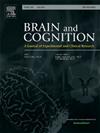Motor beta oscillations contribute to the temporal binding effect
IF 1.4
3区 心理学
Q3 NEUROSCIENCES
引用次数: 0
Abstract
Agency, the feeling of controlling one’s actions and their consequences, is closely linked to temporal binding, a phenomenon where the interval between a voluntary action and its outcome is subjectively compressed. While prior research has linked temporal binding to sensorimotor processes, the role of neural oscillations remains unclear. In this study, we combined electroencephalography with an automatic imitation task to examine how trial-by-trial variations in motor-related brain rhythms predict temporal binding. Twenty-eight participants performed lifting finger movements in response to visual imperative stimuli. Following each response, they estimated the interval between their action and a subsequent tone. Time-frequency analysis and linear mixed-effects modeling revealed that reduced beta desynchronization predicted stronger temporal binding, independent of action congruency. These results suggest that motor beta oscillations reflects the temporal experience of action-effect coupling, likely reflecting predictive motor processes involved in the construction of voluntary actions.
运动振荡有助于时间约束效应。
能动性,即控制自己行为及其结果的感觉,与时间约束密切相关,即自愿行为与其结果之间的间隔在主观上被压缩。虽然先前的研究已经将时间绑定与感觉运动过程联系起来,但神经振荡的作用仍不清楚。在这项研究中,我们将脑电图与自动模仿任务相结合,以研究运动相关的脑节律的每次试验变化如何预测时间绑定。28名参与者在视觉指令刺激下进行了举起手指的动作。在每个反应之后,他们估计他们的动作和随后的音调之间的间隔。时频分析和线性混合效应模型显示,减少β去同步预示着更强的时间绑定,独立于动作一致性。这些结果表明,运动β振荡反映了动作-效应耦合的时间经验,可能反映了参与自愿行为构建的预测性运动过程。
本文章由计算机程序翻译,如有差异,请以英文原文为准。
求助全文
约1分钟内获得全文
求助全文
来源期刊

Brain and Cognition
医学-神经科学
CiteScore
4.60
自引率
0.00%
发文量
46
审稿时长
6 months
期刊介绍:
Brain and Cognition is a forum for the integration of the neurosciences and cognitive sciences. B&C publishes peer-reviewed research articles, theoretical papers, case histories that address important theoretical issues, and historical articles into the interaction between cognitive function and brain processes. The focus is on rigorous studies of an empirical or theoretical nature and which make an original contribution to our knowledge about the involvement of the nervous system in cognition. Coverage includes, but is not limited to memory, learning, emotion, perception, movement, music or praxis in relationship to brain structure or function. Published articles will typically address issues relating some aspect of cognitive function to its neurological substrates with clear theoretical import, formulating new hypotheses or refuting previously established hypotheses. Clinical papers are welcome if they raise issues of theoretical importance or concern and shed light on the interaction between brain function and cognitive function. We welcome review articles that clearly contribute a new perspective or integration, beyond summarizing the literature in the field; authors of review articles should make explicit where the contribution lies. We also welcome proposals for special issues on aspects of the relation between cognition and the structure and function of the nervous system. Such proposals can be made directly to the Editor-in-Chief from individuals interested in being guest editors for such collections.
 求助内容:
求助内容: 应助结果提醒方式:
应助结果提醒方式:


